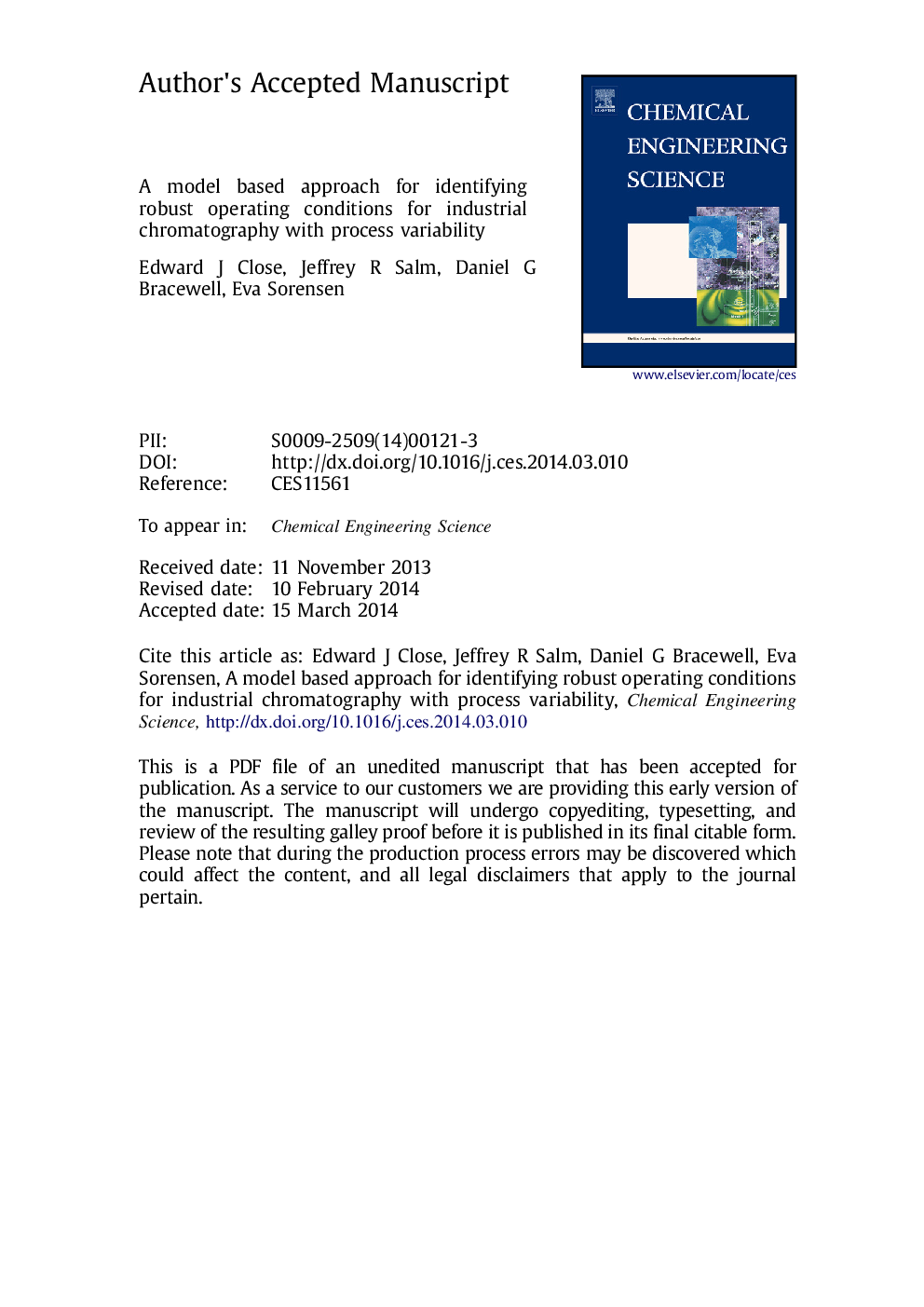| Article ID | Journal | Published Year | Pages | File Type |
|---|---|---|---|---|
| 6591034 | Chemical Engineering Science | 2014 | 35 Pages |
Abstract
A model based approach has been developed and used to identify robust operating conditions for an industrial hydrophobic interaction chromatography where resin lot variability, combined with feed stream variability, was resulting in serious performance issues during the purification of a multi component therapeutic protein from crude feed material. An equilibrium dispersive model was formulated which successfully predicted the key product critical quality attribute during validation studies. The model was then used to identify operating parameter ranges that assured product quality despite the process variability. Probabilistic design spaces were generated using stochastic simulations that showed the probability that each resin lot would meet product quality specifications, over a range of possible operating conditions, accounting for the historical variability experienced in the load material composition and concentration. No operating condition was found with normal process variability where quality assurance remained >0.95 for resins that gave the highest and lowest product recoveries during process development. The lowest risk of batch failure found was 16%, and operating conditions were not robust. We then extended the stochastic methodology used to generate probabilistic design spaces, to identify the level of control required on the load material composition and concentration to bring process robustness to an acceptable level, which is not possible using DOE experimental methods due to the impractical amount of resources that would be required. Although reducing inlet variability resulted in an increase in the assurance of product quality, the results indicated that changing operating conditions according to which resin lot is in use is the favorable option.
Related Topics
Physical Sciences and Engineering
Chemical Engineering
Chemical Engineering (General)
Authors
Edward J. Close, Jeffrey R. Salm, Daniel G. Bracewell, Eva Sorensen,
